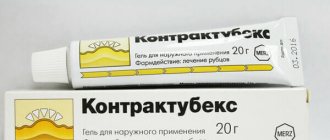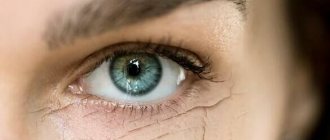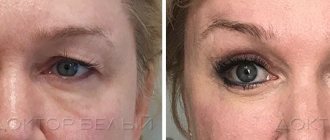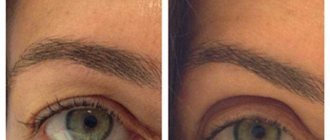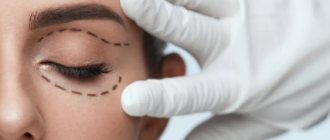As a rule, electrophoresis with lidase is performed on the ears when a disease such as otitis media appears. A special electrode is placed in a fabric pad; it is pre-impregnated with a lidase solution. Next it is placed in the ear. To combat the disease, a series of treatments are given to each ear separately.
This procedure can be used for other parts of the body if it is necessary to remove fluid accumulations from the body by improving the permeability of fluid flow. Electrophoresis with lidase on the ear is considered a virtually painless and absolutely safe procedure. However, before using it, it is recommended to first consult with a specialist.
Features of endonasal electrophoresis
The current passes through the tissues of the body in the direction from one electrode to another. On its way there are obstacles that have different electrical conductivities. So in the eyeball, the lowest electrical conductivity is in the skin of the eyelids, and the highest is in the intraocular fluid. To overcome low conductivity tissues, high current energy is required. As a result, galvanic exothermic reactions develop, the acidity of the environment changes, and active metabolites and enzymes are formed. As a result, microcirculation improves, and a burning sensation appears in the area affected by the current.
Simultaneously with the increase in blood and lymph flow, the so-called resorption capacity of tissues increases and the permeability of the blood-ophthalmic barrier increases. As a result, the effective dose of drugs is reduced compared to the parenteral route of administration.
The cornea of the eye is an excellent semi-permeable membrane that allows ions of matter to pass into the eyeball. The concentration of the drug inside the eye becomes high enough for the treatment to produce the desired result. The effectiveness of the influence on pathological foci is prolonged.
Features of carrying out using lidase
Galvanotherapy can often be found as an alternative name. And although many experts believe that electrophoresis with lidase on the ear has less impact than in the treatment of cancer. The drug is applied exclusively to the affected areas so as not to injure the mucous membrane.
In most cases, lidase is used by actively breaking down hyaluronic acid. As a result of exposure to the substance, fluid flow improves and permeability through skin tissue improves. Therefore, electrophoresis with lidase in the ear takes much less time. The substance helps minimize the risk of developing an allergic reaction. Even if the doctor’s prescription suggests long-term exposure to the drugs.
Lidaza is used not only by ENT specialists, but also in the gynecological medical industry it is of great importance. As a rule, it is used to eliminate adhesions in the fallopian tubes, which can become the main cause of infertility.
As for the duration of treatment of otitis in this way, the attending physician determines the amount of the course depending on the stage of development of the disease and the general physiological condition of the patient. Negative reactions of the body to lidase can include:
Hyperemia. As a rule, it appears after the procedure is completed (as soon as the pad is removed), but goes away within a few minutes
Standard manifestation of an allergic reaction (itching, tingling, burning).
Method of electrophoresis
When performing electrophoresis, various techniques can be used:
- Electrophoresis according to Bourguignon. In this case, the electrode with the medicine is placed on the skin, and the second electrode is placed on the skin of the neck. As a result, the drug penetrates into the anterior parts of the eye. The technique is suitable for the treatment of diseases of the eyelids and anterior chamber structures.
- Bath electrophoresis. The technique is used more often. In this case, the medicine solution is poured into a special bath into which the open eye must be immersed. the second electrode is placed on the back of the neck. The technique is suitable for the treatment of inflammation and dystrophic changes in the anterior segment of the eye.
- Endonasal electrophoresis. Electrodes with medication are placed in the nasal passages. The second electrode is traditionally attached to the skin at the back of the neck. In this case, the medicine penetrates better into the posterior structures of the eyeball. The technique is used in the treatment of inflammation and dystrophy of the retina and choroid.
- Local electrophoresis. This requires a special point electrode. The technique is also suitable for diagnostic examination of the cornea and monitoring the flow of intraocular fluid in patients with glaucoma.
The duration of the session is 10-20 minutes, and the current strength ranges from 0.5 to 1 mA. The course of treatment includes 10-15 procedures, which are prescribed every other day or daily.
Vasodilators, enzymes, angioprotectors, neuroprotectors, and substances that change the size of the pupillary opening (miotics, mydriatics) can be used as medications during electrophoresis. Drugs are injected from the anode to the cathode.
Before starting the procedure, it is necessary to establish the stability of the drug in an electric field, as well as the risk of the formation of toxic metabolites. This helps calculate the optimal drug concentration.
Advantages of visiting the Yusupov Hospital
Yusupov Hospital is a medical institution in which doctors maintain the tradition of attentive and respectful treatment of patients, and also provide a wide range of medical services. Electrophoresis with lidase is one of the most popular services in physical therapy, which is why specialists at the rehabilitation center successfully perform it when patients contact us.
The Yusupov Multidisciplinary Hospital has the following advantages:
- high level of services and maintenance. A visit to the Yusupov Hospital is comfortable and effective for every patient. Experienced specialists provide various types of medical services, which allows us to work even with those patients who were rejected in other clinics;
- modern equipment for treatment and diagnostics. When carrying out electrophoresis, European-made devices are used, which are regularly serviced;
- professionalism of employees. The Yusupov Hospital employs more than 150 carefully selected employees, 12 of whom are doctors of science, 36 employees have a candidate’s degree;
- comfortable living conditions. The rooms in the Yusupov Hospital are equipped with comfortable furniture, wireless Internet and the necessary consumables;
- information support for each patient.
Lidase electrophoresis is one of the many procedures performed in the rehabilitation clinic. To use it, you must make an appointment with a physiotherapist by calling the Yusupov Hospital.
Contraindications
Contraindications to performing electrophoresis in ophthalmology are divided into general, which apply to all physiotherapeutic procedures (indicated by *), and specific, which are valid in this case specifically for electrophoresis:
- Oncological neoplasms (benign, malignant) *;
- Diseases of the blood or hematopoietic organs (blood clotting disorders, hemorrhagic conditions) *;
- Epilepsy*;
- Infectious diseases in the acute period*;
- Feverish conditions *;
- Chronic infectious diseases in the acute stage (tuberculosis, brucellosis, etc.) *;
- Decompensated form of diseases of internal organs (heart, lungs, etc.) *;
- Hypertension III degree*;
- Metallic foreign bodies inside the eye.
Devices and apparatus
For electrophoresis procedures in ophthalmology, devices such as “Potok-1”, “Potok-2” or “Elfor” are used, which are generators of continuous direct current. In addition, devices such as “Amplipulse” or “Tonus-2” are used, which implement intermittent constant or pulsating currents. The electrodes in such devices are metal (or other current-conducting) plates equipped with pads made of fabric with hydrophilic properties. The dimensions of such pads are 1.5 cm larger than the dimensions of the conductive plates, and their thickness is 1 cm. Before the electrophoresis procedure, the pads are sterilized.
Indications for the procedure
Electrophoresis procedures are indicated for inflammatory and dystrophic eye diseases in acute and chronic form. These include:
- Styes, phlegmons and chalazions;
- Scars on the eyelids;
- Keratitis, iridocyclitis, episcleritis;
- Processes of formation of adhesions in the anterior part of the eye;
- Bleeding in the eye;
- Vitreous opacities;
- Chorioretinitis and chorioretinal degenerations (central and peripheral);
- Macular degeneration, neuritis, optic nerve atrophy;
- Postthrombotic retinopathy.
Stimulating treatments
For pathologies of the upper respiratory tract and otitis media, stimulating physiotherapy techniques are used:
- Exposure to a static magnetic field allows you to normalize the outflow of lymphatic fluid, significantly improves vascular tone, which is important in the treatment of otitis media.
- Lymphatic drainage massage allows you to restore the functioning of the eardrum and relieves swelling. The physiotherapy procedure is performed using special vacuum attachments of various diameters.
- Therapy using diadynamic current allows you to restore the natural muscle tone in the affected area. In addition, when using this type of physiotherapy, an analgesic effect, normalization of blood circulation and lymph outflow are observed.
- Amplipulse therapy is another effective way to treat otitis media in children using sinusoidal currents. The negative effects of such treatment are minimized, the patient does not feel any discomfort. After just a few sessions, the pain is significantly reduced and blood circulation is normalized.
The essence of the method
The therapeutic effect of medicinal electrophoresis is explained by the influence of both the drug used and the influence of direct electric current. Passing from one electrode to a pair through tissue, the electric current encounters a certain resistance, the magnitude of which is determined by the electrical conductivity of the tissue. The intraocular fluid has the best electrical conductivity in the eyeball, while the epidermis of the eyelids has the worst. To overcome places with the lowest electrical conductivity, significant current energy must be expended. At the same time, an increase in energy to overcome tissue resistance causes galvanic reactions in them, which is accompanied by the formation of a significant amount of heat and the redistribution of ions, both in the intercellular and cellular substance. In addition, there is a change in the acid-base balance of the environment, leading to the formation of bioactive substances and enzymatic activity in metabolic processes. Due to this, local blood circulation is quickly activated with a burning sensation at the point of contact of the electrodes with the tissues and slight redness of the tissues themselves.
The galvanization reaction causes increased blood and lymph circulation in tissues, increases their resorption capacity, stimulates metabolic and trophic processes, activates the secretory function of glands, and significantly improves the permeability of the blood-ophthalmic barrier. Electrophoresis helps to prolong the action of the drug in a much lower dose than is usually prescribed for parenteral administration. The cornea is an ideal semi-permeable membrane through which ions can penetrate into the eye. The permeability of the blood-ophthalmic barrier improved by galvanization allows for more complete penetration of drugs into the eye, which is much more effective than their injection into the tissue around the eyeball. In addition, after the administration of drugs using electrophoresis, they accumulate in tissues, which explains the prolonged drug effect on the pathologies being treated.

